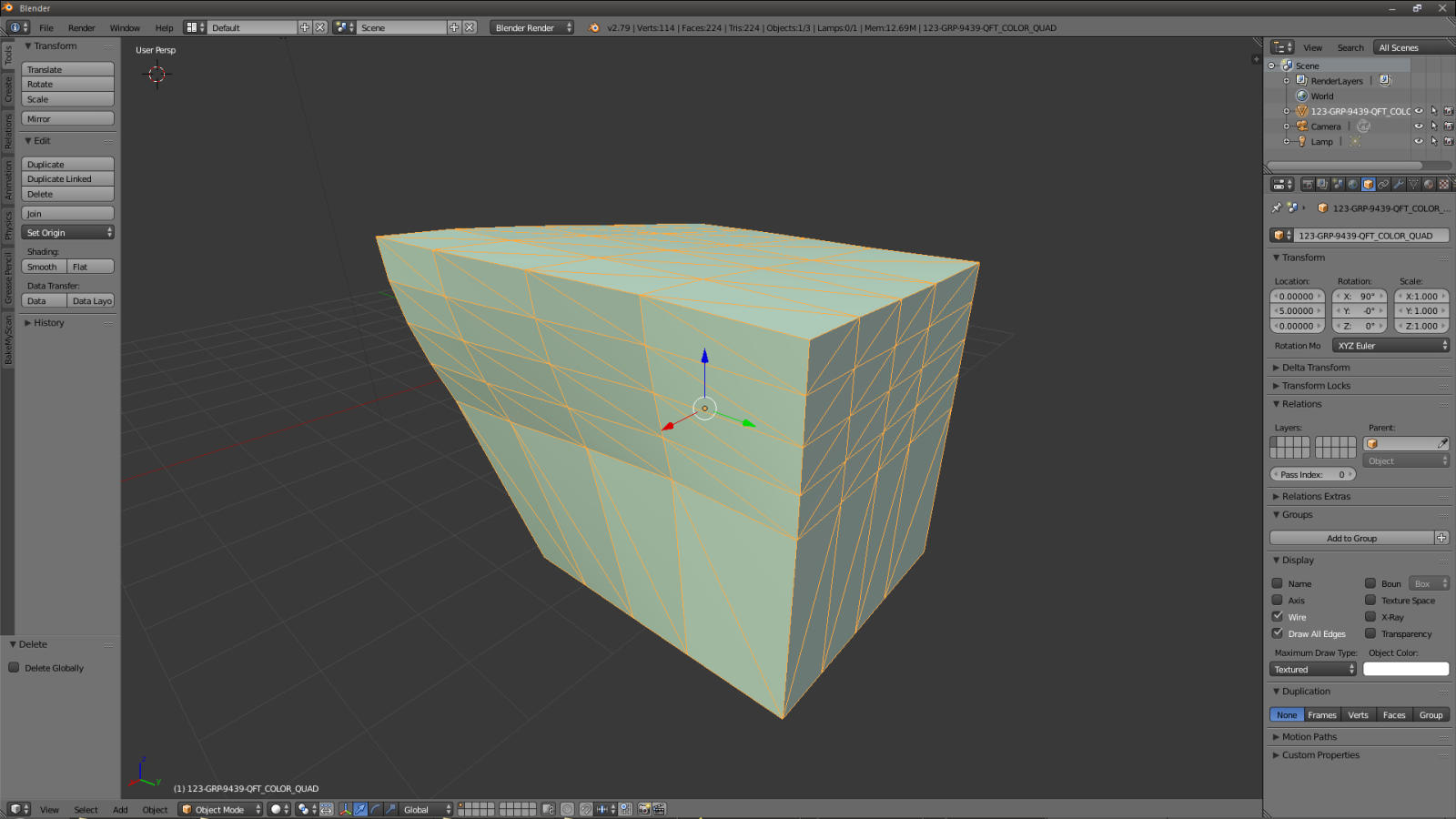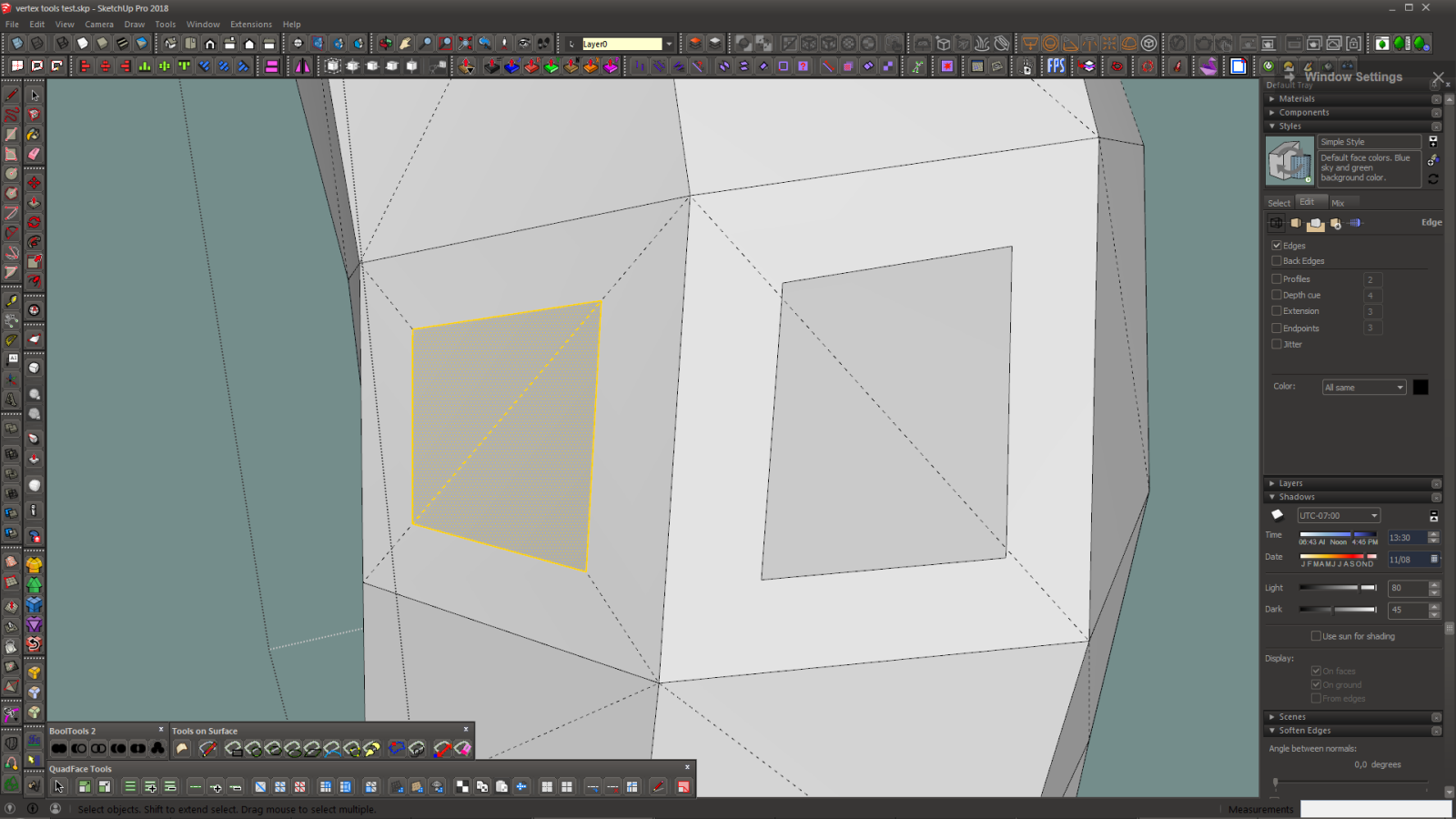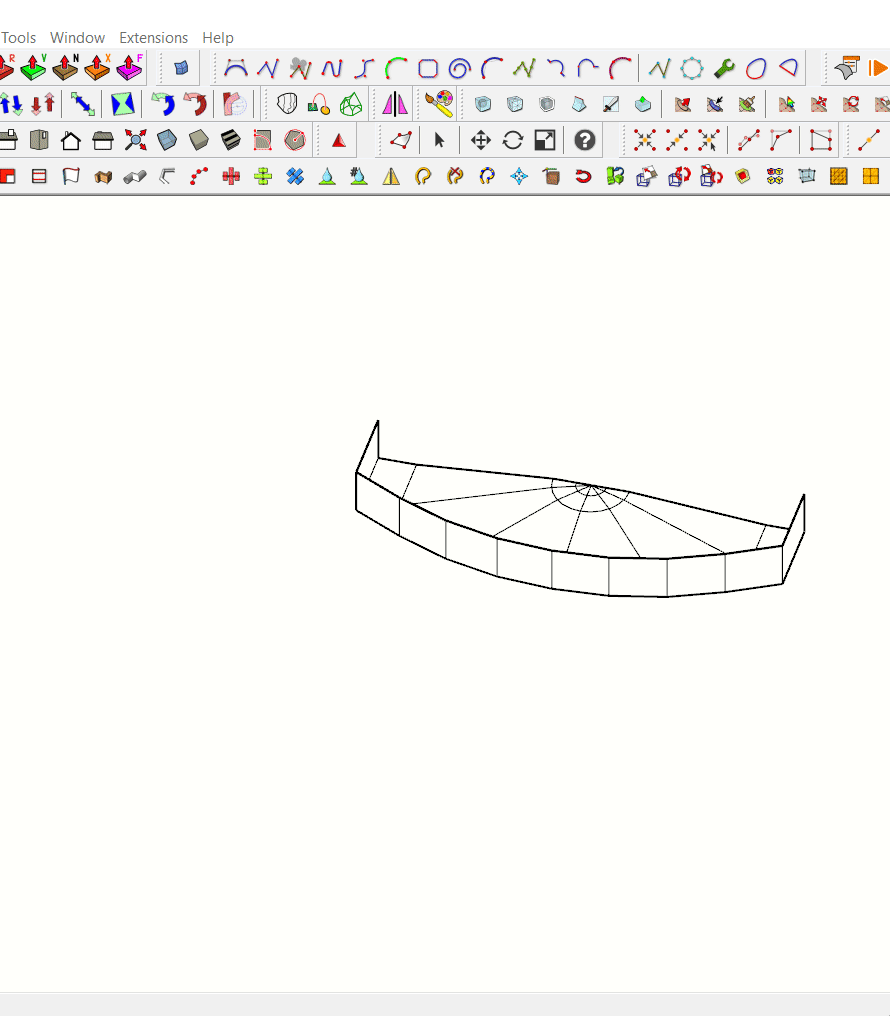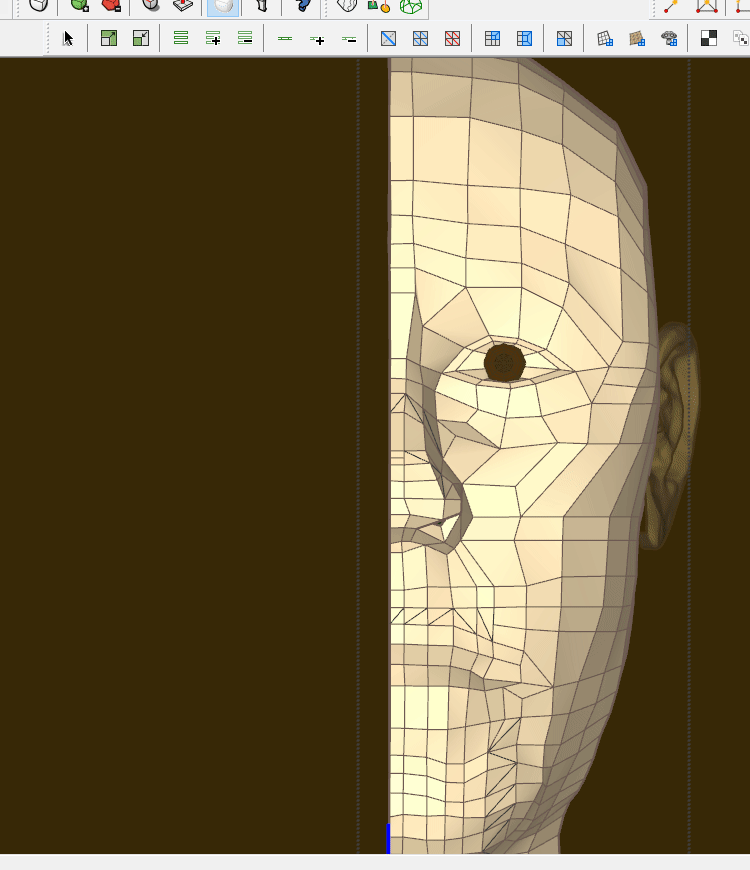[Plugin] QuadFaceTools
-
@summerson1990 said:
@pilou said:
Why not export from Max only unwelded quads? (separated)
I have found that it's probably best of all to export from max as .obj but it can't import UV mapping correctly
Just no. Stay away from the native obj exporter, it will just destroy non planar quads.
Using the obj exporter in quadface tools (not the default sketchup obj exporter or other exporters plugins) , I manage to export models from quadface tools to 3dsMax preserving QFT quads.
Still a lot of workarounds goin'on.You need to import the obj in max checking the "import as single mesh" and "import as editable poly" and unchecking any "retriangulate" option.
After that, you still need some manual cleanup.
You will notice (at least this is what happen for me so far) that if you edit the mesh in "element" mode from the modify panel, the mesh is generated twice.
There's one big welded element with quads (which is the one you want to preserve) and, overlapped on thop of that, an individual element for each single triangle in the mesh (you want to get rid of that).What I usually do is to select one random element. If I'm lucky enough, the big quad element is selected. In that case, I just invert selection and hit delete to get rid of the bad duplicated geometry. If I'm less lucky and select a floating triangle I just delete that element and click again in the very same place to be sure i can select the "good mesh".
You have not finished yet.
Once you finished the mesh cleanup, you need to add an unwrap modifier on top of that and check your uv islands.
You'll eventually notice that the island are properly arranged, but there's an unwanted seam for each single QFT quad border.
That's really annoying for me (I'm importing this models after I properly UV map them in Wrap-r and sometime need to do minor rework in Max before export to Unity for VR apps).
If you import such model in Unity as it is, it will have quadruple the vertex count it should, being that vertices at the border of uv-island are split at runtime in Unity (that's how it works in gpu).
That's make for a really poor performing game asset.What I usally do to fix this problem, is just to activate the vertex mode of max unwrap editor, select all the vertices (assuming you don't have overlapping uv's) and just weld them.
I recently noticed that Wrap-r does a pretty good job exporting quad meshes to 3dsMax in obj format.
You just open the sketchup/qft quad model in wrap-r, do the uv stuff, export an obj from wrap-r and that imports fine with quads in Max.
Still not perfect, because for some reason, the material is imported with 0% opacity set up by default.
Not a big deal if you know it, but the first time this drove me crazy because I was thinking it imported just a wireframe mesh.
-
SketchUp 2019 installed QuadFace Tools v0.14.0
Requires TT_Lib2, I did not figure out how to connect it. -
-
Hi!
I'm thinking...
If I export a model with quad topology using QuadFace Tools' OBJ Exporter and import it to Blender, it should theoretically import with quads retained. In fact, the mesh imports triangulated, as in the screenshot.
Otherwise Blender wouldn't display diagonal edges.I inspected the topology in SketchUp with QuadFace Tools color analysis and I'm sure I exported quads. Am I doing something wrong? Did you guys try to move quads from SketchUp to Blender?

-
@einstein said:
If I export a model with quad topology using QuadFace Tools' OBJ Exporter and import it to Blender, it should theoretically import with quads retained. In fact, the mesh imports triangulated, as in the screenshot.
Did you try to do what I described above about 3dsmax? It could be basically the same in blender..
-
Hello, is there a way I can hover over an edge and choose where to place the loop instead of inserting it in the middle ? (using Quadface tools)
-
@forrest09 said:
Hello, is there a way I can hover over an edge and choose where to place the loop instead of inserting it in the middle ? (using Quadface tools)
try offset loop.
-
Hi!
Do you know any trick to quickly inset a quad, like in the picture?
The one on the right I did with Fredo's Offset on surface (Tools on surface) but as you can see, it didn't do good job.
The one on the left I made manually but that takes time when I want to make more individual insets.

-
A proper inset function would be great..
Meanwhile the best workaround I've found is to perform a small joint push pull with maximum molding amount and then refine with vertex tools. See what I do in this video.How did you obtain that beautiful dark interface? I need one myself.

-
@panixia said:
A proper inset function would be great..
Meanwhile the best workaround I've found is to perform a small joint push pull with maximum molding amount and then refine with vertex tools. See what I do in this video.How did you obtain that beautiful dark interface? I need one myself.

Right, this is quite good workaround

As for dark interface: gotta admit I waited for the day somebody would ask about that haha

I use Windows 7 and I installed an external system theme that was designed to look like Steam gaming platform. It affected SketchUp appearance. I had to first patch system settings to allow installing external themes but it was easy. Note that the changed theme will affect some other program interfaces too, e.g. ArchiCAD, CorelDRAW, Notepad but not: Blender, Unity, MS Office, Autodesk programs.
If you write me a private message, I'll give you more precise instructions cuz it's an offtop now
-
Thank you, but unfortunately I'm forced to use windows 10..

-
that's some next level quad stuff!! Has anybody had any luck transforming terrain imported through Trimbel's native location importer into quads? It seems like it should be straight forward but it doesn't seem to work well. There seems to be something odd about the exterior edge that causes quadface to ignore it. I'd love some imput on this. I'm trying to figure out a work flow that would alow me to drop a hi rez terrain generated by toposhaper (which works well with quads) into a mesh imported from trimble. the ultimate idea is to bring it into blender to sculpt and paint and the back into sketchup. Its mostly working but the flow is a little janky. If you have any thoughts i'd love to hear them.
-
@teknoel said:
Has anybody had any luck transforming terrain imported through Trimbel's native location importer into quads?
I do this all the times. That's not about luck.. All you need are a couple of selection filters and a little bit of reasoning

-
Is this normal? When I use Offset Loop tool I cannot type offset value in VCB. I can only use graphic inferencing.
-
I can’t divide it into the required number of segments. There is a number 1, which I can’t change. What is the reason for this?
-
@kat_m said:
I can’t divide it into the required number of segments.
Can't divide what? Provide an example .skp file so we can see what you are talking about.
What version of SketchUp are you using. Your profile says "2020 Free/Make" but there is no such version. Please correct your profile.
-
I can see there is a new version. What has changed? There is no changelog.
-
This is a recent error I'm getting. I can reliably reproduce this

-
So after a little troubleshooting, I discovered that the error only occurs when a single line is selected. For example, selecting a series of lines on a sphere, the offset loop worked properly. Also selecting 2 connected lines on a flat rectangular surface works fine as well. Selecting a single line as in the above example I posted, produces the error. My question: Is this normal? I know this is not a licensed plugin. I just want to know if its working as it should.
-
Best kept secret
Poles present a challenge to anyone modelling in quads.
Types of poles as described by **Thomas Thomassen
These appear when you enable the "Highlight Poles" option from the QFT Selection tool's context menu.
These refer to how menu (many) edges a vertex connect to:- N poles: 3
- E poles: 5
- X poles: more than 5
It's there to visualize where the mesh isn't a regular grid pattern. Typically where the flow of the topology changes.**
QuadFace Tools has an option to see the poles in your model. Watch the Gif to see how.

Advertisement







